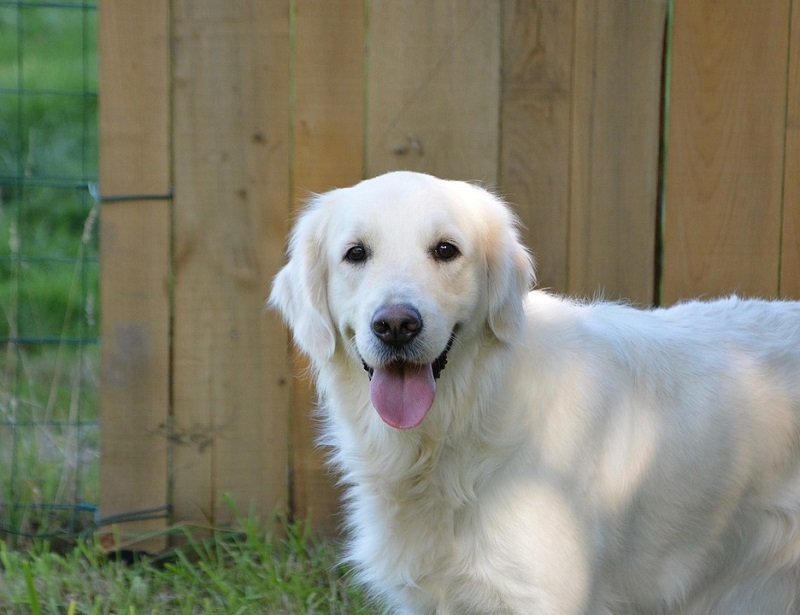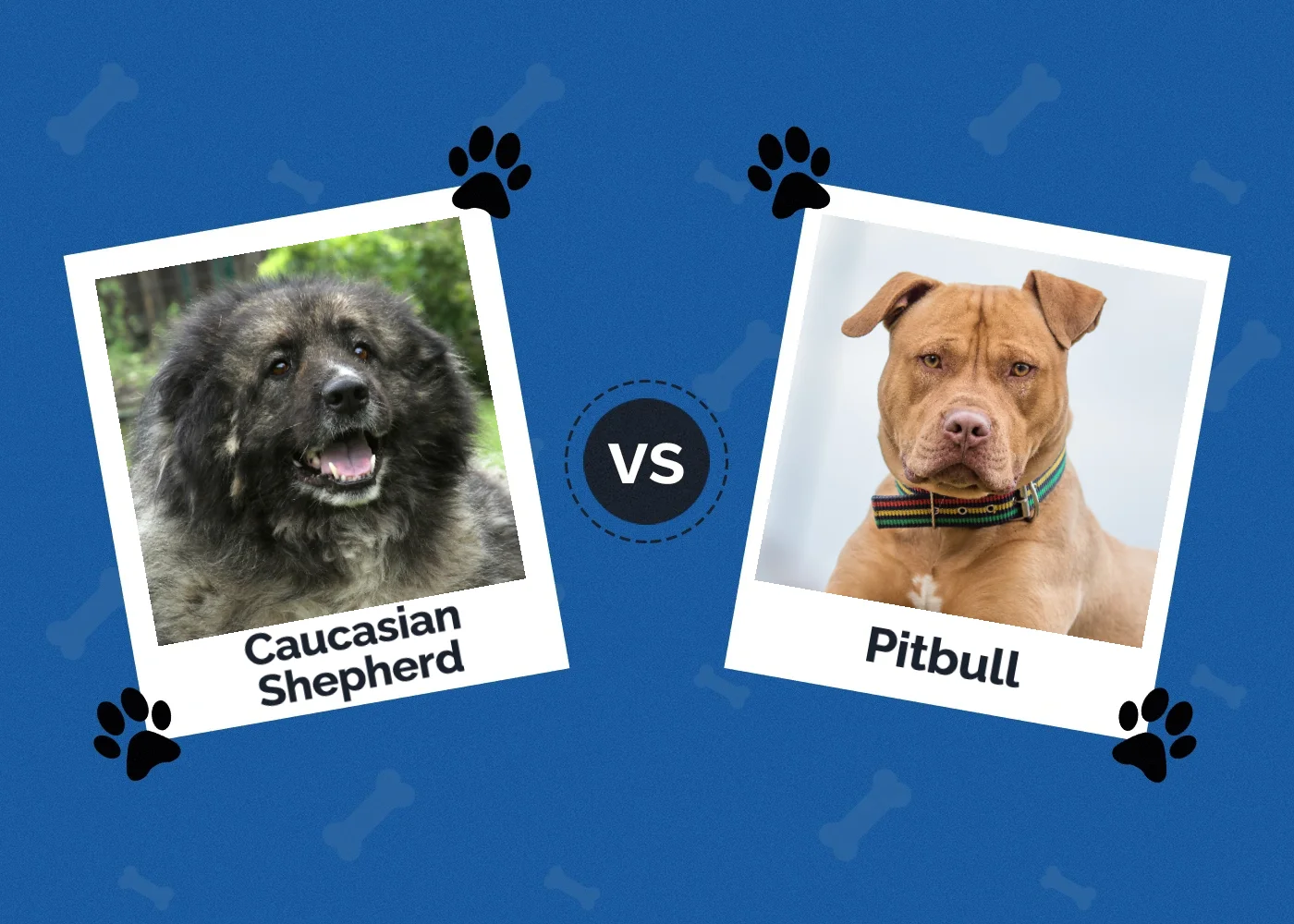How to Stop Your Dog from Jumping on People: 7 Useful Steps

Updated on
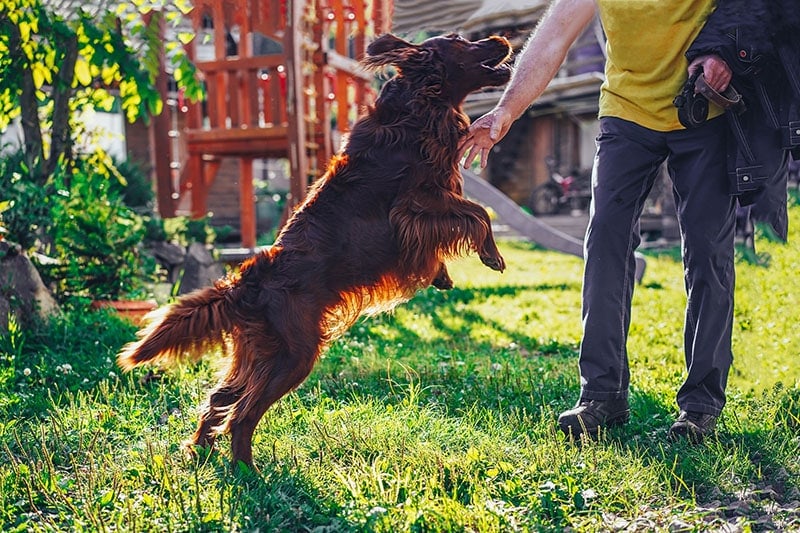
Click to Skip Ahead
Our dogs’ sweet and entertaining behaviors often outweigh the not-so-wanted ones, but those behaviors should still be addressed. One of the most unwanted behaviors exhibited by our canine companions is jumping on people, and while that may not be a huge issue for some, it can be harmful to small kids, seniors, or people with injuries or disabilities.
Thankfully, with patience and training, you can teach your dog not to jump on your guests, and in this article, we explain how in just seven simple steps.
Before You Start: Understand Why Your Dog Jumps
Jumping on people is one of the most common unwanted behaviors that dogs exhibit, and it can be frustrating and harmful in some instances. Dogs do this mostly on exciting occasions when emotions are charged, such as when you arrive home from work. If you have guests over, your dog may feed off that excited energy, especially if it is a family member or friend you haven’t seen in a long time, and your excitement is elevated.
Dogs also jump because they are seeking attention. A new face grabbing your dog’s attention may cause excitement for your dog, and it may feel excited to receive extra rubs, kisses, and perhaps even treats.
Jumping is normal behavior and isn’t necessarily a bad thing. However, as we said before, it can be harmful if your dog knocks someone over, or it can be frustrating when your work outfit is left with dirty paw prints. Owners and polite guests can accidentally reinforce this behavior by responding to the behavior with excitement or attention. That’s okay because it’s hard not to give our dogs praise and love, and fortunately, this behavior can be stopped with the proper training.
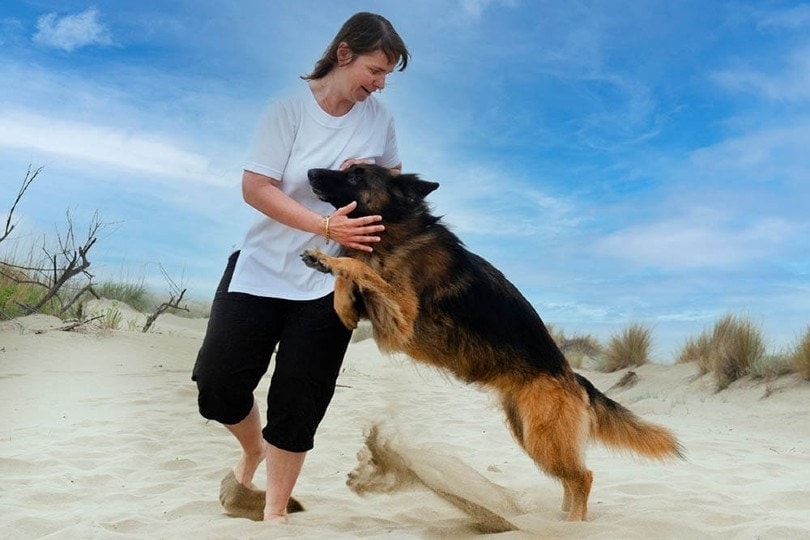
The 7 Simple Steps to Stop Your Dog from Jumping on People
1. Ignore Your Dog When They Jump
While it may be hard to ignore your dog’s adorable face when you arrive home, in the end, it’s the best thing you can do. Try not to engage at all and try to either stand still or walk right past them. If you find this too hard, try turning your back so you don’t have puppy eyes looking at you. Your dog will read your body language and eventually learn that jumping up is no way to get your attention. Wait until your dog is completely calm, and then go over and say hello with a bit of praise.
Consistency is key, so you need to get your whole family on board, as well as your friends. Explain what you are trying to do and ask them to help you by behaving the same way.
2. Put Your Dog in Another Room When Visitors Come Over
When you begin training your dog not to jump, it’s vital to ensure that they are not put in a situation where they may get attention for jumping, like when guests visit. Before they arrive, put your dog in a separate room or crate if your visitors aren’t staying long.
Once your dog begins to obey basic obedience commands, you can let them out of the room when guests come over while notifying your visitors of your training so they can be consistent with your actions.

3. Teach Your Dog “Four on the Floor”
“Four on the floor” is a concept that you only praise your dog when all four paws are in contact with the ground. This will teach your dog that they will only get attention when sitting down or standing. As soon as your dog’s paws are in contact with the ground, bend over to greet them right away before they have a chance to jump. If your dog already has obedience training and understands “sit” and “stay,” teaching them “four on the floor” will be a lot easier.
4. Train Your Dog to Sit When Meeting Someone
Again, this is where basic obedience training really helps. If your dog understands the sit command, you can start to associate the behavior with meeting someone new. Every time your dog meets a stranger, use the “sit” command. Inform the person about your training process so they know how to respond. When your dog sits, you and the new friend can provide praise and a treat. That way, your dog will learn that every time it meets someone new, the correct behavior is to sit.
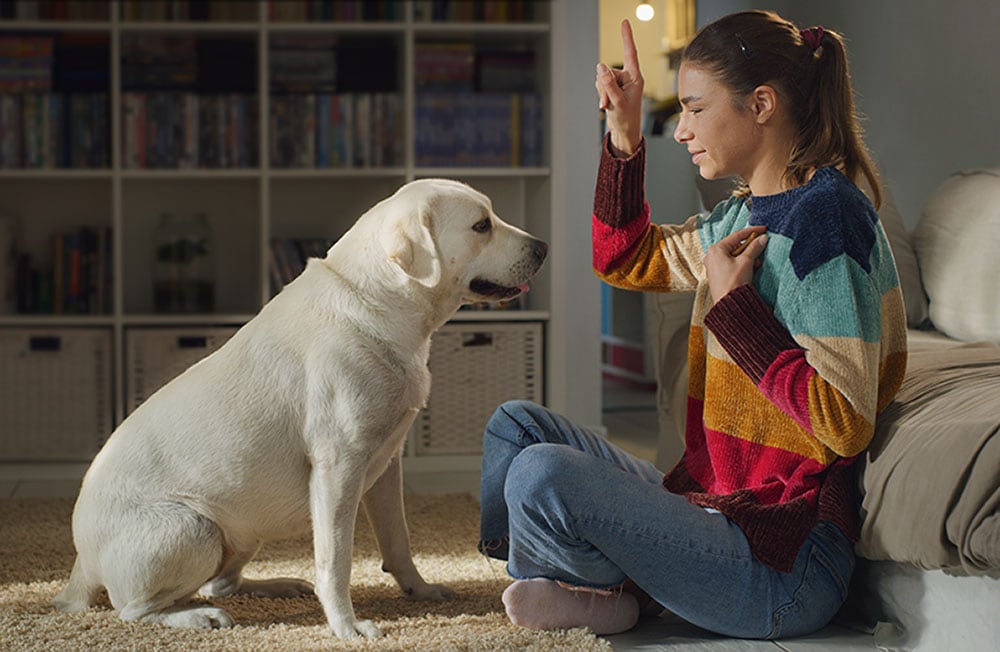
5. Use a Lead When Visitors or People Are Near
A Leash is a great tool to put you in control when you have visitors over. When guests arrive, attach your dog’s leash and tell it to sit and stay. When your dog listens, reward it with praise and a treat. As your guests approach, you may find your dog wanting to dart off, but with the leash attached, you can give it a little tug with the command “sit” and “stay” to reel your dog back in. Remember to have treats with you to reward your dog every time it co-operates.
6. Use Positive Reinforcement
The golden rule for any training is positive reinforcement. This method involves praising and rewarding your dog anytime it shows a wanted behavior. They will associate this action with a positive experience, therefore reinforcing it. It is always handy to have treats nearby so that you can offer a reward right away.
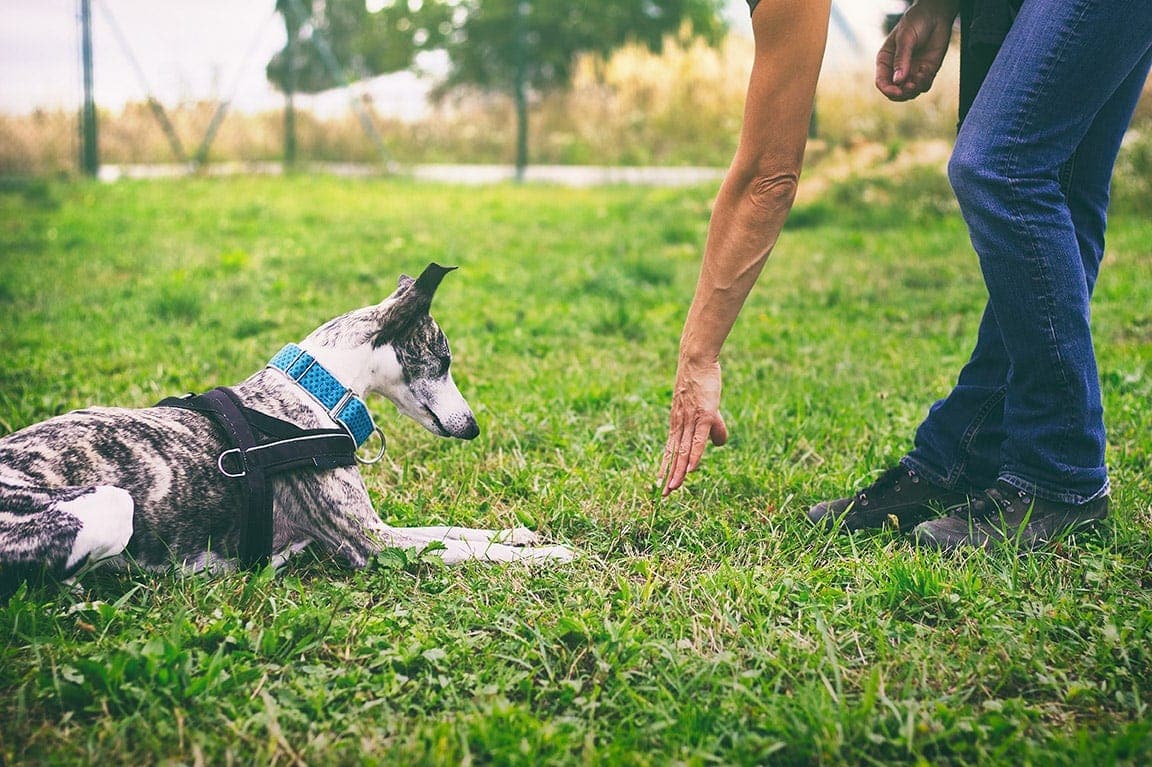
7. Be Patient
Patience is crucial for training your pet. All dogs are different and learn at different paces. They may have good days and bad days, but if you have the proper amount of patience, the training will remain consistent and always be a positive experience for your dog.
How to Teach Your Dog to Sit and Stay
Teaching your dog to sit is the most basic and necessary command. If you can get your dog to sit on a cue, you can further train them for other tasks like staying or fetching. Teaching your dog to sit on command will also keep them safe. If your dog sits when you cue the command, it can prevent them from running off into the street, after prey, and of course, jumping on people. Following “sit,” your dog needs to learn to stay until you give it the cue to get up again.
Start by teaching your dog “sit,” and then you can move on to “stay.”
- Stand in front of your dog, have a treat in your hand for your dog to see, and tell them to “sit.” Your dog may need some encouragement, and you can gently push them into a sitting position.
- Once your dog stays in the sit position and is completely still, you can give them the treat and praise immediately afterward.
- Repeat this exercise until you are confident your dog knows the word “sit.”
- Once your dog has mastered “sit,” slowly move back while saying the command “stay.”
- Each time your dog stays, offer the treat and lots of praise.
- Move further back each time until you are confident your dog knows the command to stay.
- You can even try placing the treat on the floor while telling your dog to stay and gradually increasing the time you leave it there. As your dog gets more obedient, you can start turning your back. When you say “okay” or “take,” your dog can retrieve its treat.
The more your dog practices sitting and staying, the better, especially in different environments. Your dog should also know how to sit and stay when distracted. For example, your dog should sit before they receive a meal, before you open the door to let them out, and while you attach the leash. This makes sitting for guests a lot easier.
Conclusion
The key to getting your dog to avoid jumping on people is to ensure they know how to obey the sit and stay command. They can easily be trained to follow these basic foundations of obedience, and once they have mastered it, you can arrive home to an obedient dog that will sit and wait for their greeting. With patience, these simple steps can help you stop your dog’s jumping, and your dog can still feel as excited but more well-behaved.
Featured Image Credit: AlexandrinaZ, Shutterstock





